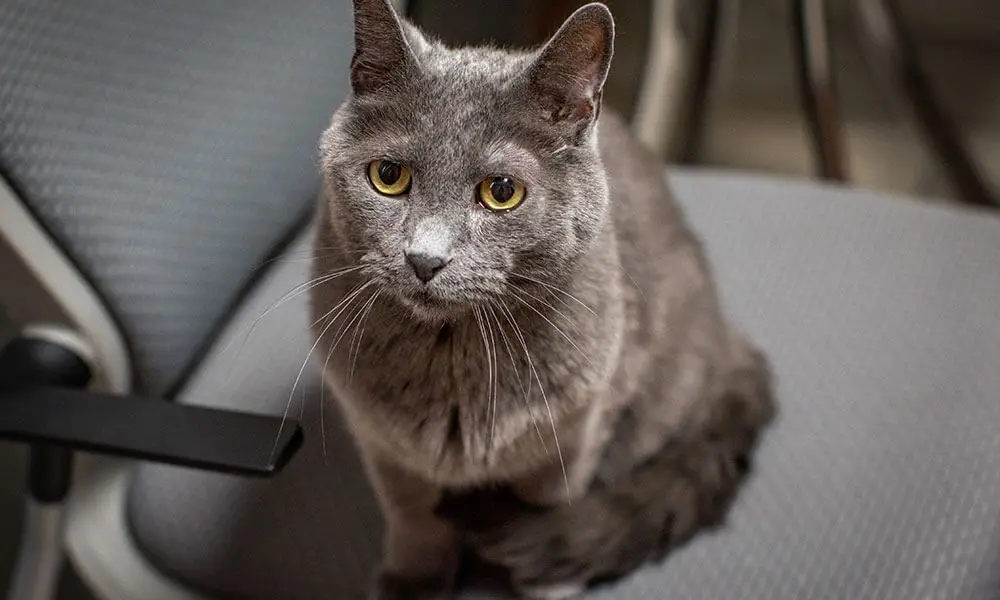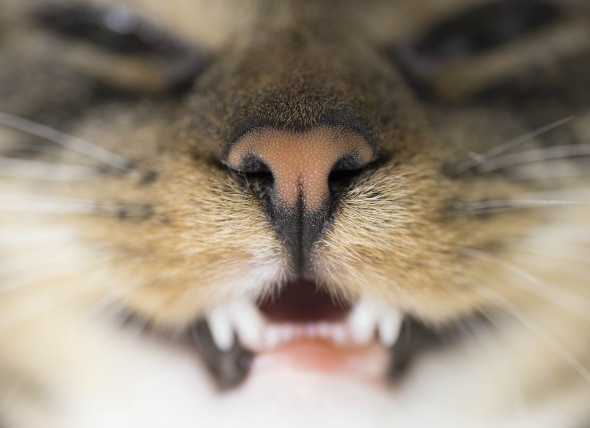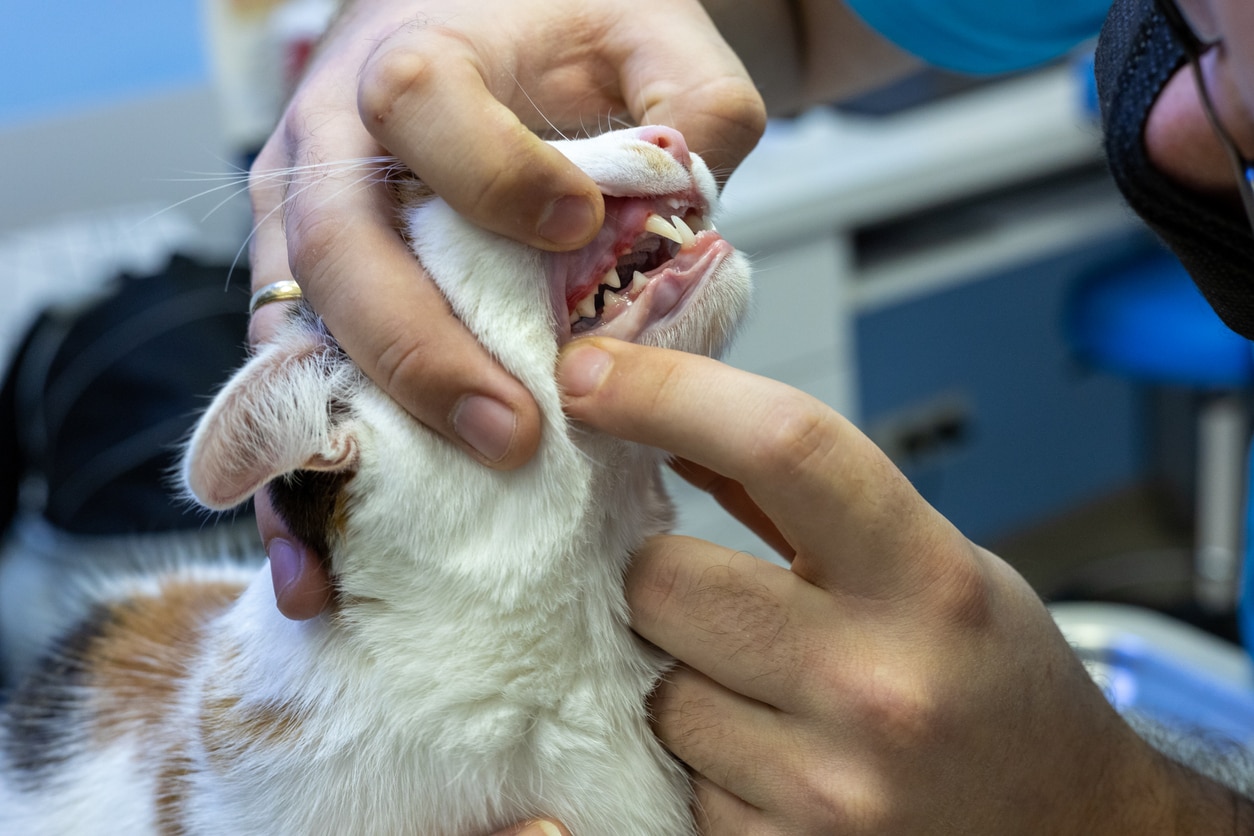tooth resorption cats symptoms
Spoil Your Cat With The Best Cat Toys All-Natural Treats. Symptoms of Tooth Resorption in Cats.

Dental Care For Cats North Elm Animal Hospital
Ad Sign Up For Your Monthly KitNip Subscription Box With High-Quality Cat Toys Treats.

. Oral disease in cats comprises four major conditions. All types of teeth in the feline dentition may be affected but lesions seem to be more common in certain teeth. This makes it very important to be able to.
Get A New Box Every Month. Older cats and particular breeds including Siamese Persians and Abyssinians appear to be more at risk but all cat owners should be aware of the condition. What Are the Other Symptoms.
Though the cause of this condition is unknown there are some treatment options available to save the felines from the pain and discomfort involved. Cats are stoic creatures naturally inclined to hide signs of pain. Various studies have found 28-67 of cats have tooth resorption and it is the most common cause of tooth loss in the cat.
This painful dental condition affects up to 60 of adult and senior cats but its symptoms can be difficult to recognize with the untrained eye. Treatment for feline tooth resorption depends on the type of tooth resorption and the severity of the condition. What Are The Symptoms.
Ad Read Customer Reviews Find Best Sellers. Any cat can develop the disease which is one of the most common oral diseases we treat. Incidence reports list a range from 30 to 60 for cats affected by this oral condition.
What cats are at risk of tooth resorption. Which is why its very important to be able to recognize the signs and behaviors detailed below. Symptoms of tooth resorption.
3 Dental radiographs are required for proper diagnosis and treatmentFeline tooth resorption TR a. Tooth resorption can be difficult to detect with cats often masking signs of oral discomfort or pain. As the dental disease progresses the symptoms your cat may show include difficulty in eating dribbling saliva face rubbing jaw chattering and weight loss.
This is an instinctive defense mechanism that domestic cats have inherited from their wild ancestors. 1 Cavities have only been noted in cats in fossils from the 13 th century. Certain breeds of cats like Siamese Persians and Abyssinians appear to be more susceptible to the disease but again any cat can develop these lesions.
Tooth Resorption vs. For this reason cats dont. Tooth resorption is divided into specific types based on the radiographic appearance of the tooth root.
Feline TR is a very common problem. Tooth resorption is a process by which the dentin a hard tissue that lies. If your cat has a type 1 tooth resorption the crown and root need to be extracted to stop resorption pain and other symptoms.
Tooth resorption is different from cavities aka caries that are so common in people. Tooth resorption is progressive and may be singular or multiple and on the lingual side where the tongue is or buccal side. The most commonly affected teeth are the premolars of the lower jaws specifically the third premolars.
While tooth resorption can be a very painful condition in your cat it can also be quite difficult to detect in your feline companion since cats are so good at masking their pain. Tooth resorption in cats is an important dental disease. Cat Tooth Resorption Treatment Cost.
This acid breaks down the enamel and dentin of the tooth which can kill the tooth. Diagnosing Tooth Resorption in Cats. So although resorption can be very painful for cats it can be hard for owners to recognize.
Resolves with proper treatment but may recur in other teeth. Periodontal disease oral neoplasia particularly squamous cell carcinoma feline stomatitis and. Most cats do much better with fewer teeth versus painful teeth.
12 Risk factors include increasing age and the presence of other dental disease including additional TR lesions. Cats with clinically missing teeth have also been found to be more likely to have tooth resorption. While tooth resorption can be very painful for cats it can be hard to recognize because our feline companions are very good at masking their pain.
In the wild a cat that showed signs of pain would be the one most targeted by predators. Since tooth resorption is a progressive disease many veterinary dentists feel that extraction is the best option for all affected teeth even those with evidence of mild disease. This led to the hypothesis that given enough time all teeth of affected cats will develop tooth resorption.
Symptoms of Tooth Resorption in Cats. A thorough physical exam by your vet along with sedation to further evaluate the mouth gums and teeth using dental x-rays is the best way to diagnose TR in cats. Feline tooth resorption is an extremely painful condition but cats tend to hide pain.
Symptoms of Tooth Resorption in Cats. Once the sensitive dentin is exposed tooth resorption is painful and manifests as muscular spasms or trembling of the jaw whenever the lesion is touched. Treating tooth resorption in cats generally involves some sort of surgical procedure.
Feline tooth resorption may show no visible signs other than gingivitis gum inflammation in its early stages although you may also notice signs of blood in your cats water or food bowl. Tooth resorption in cats is prevalent affecting 28 to 68 of mature cats depending on the population researched. Heres what you need to know about this painful condition.
All cats can develop feline tooth resorption. Resorptive Lesions or tooth resorption is a common medical condition that affects 20-60 percent of cats and three out of four over the age of five years. The most commonly affected teeth are the premolars of the lower jaws.
In fact its one of the most common oral conditions seen in cats. Tooth resorption in cats unfortunately often goes undiagnosed. Cavities are caused by bacteria that create acid.
Full mouth veterinary dental radiographs are needed for both diagnosis and treatment. The treatment for all teeth with tooth resorption is extraction as they are likely to cause pain as the disease progresses and. Tooth resorption in cats is a painful condition with an unknown cause.
So cats dont typically cry out in. 1 One study found histologic evidence of resorption in all teeth among cats with at least one clinically apparent resorption site. Ad Discover all of the most common health conditions and illnesses in cats today.
If your cat has tooth resorption its symptoms include. Tooth resorption formally known as FORLs Feline Oral Resorptive Lesions is the most common dental problem in cats especially those aged four and older with studies worldwide showing that up to 75 of cats with dental disease also suffer from tooth resorption. If your cat is showing any symptoms as described above your vet may also recommend blood tests urinalysis sedation and dental x-rays.
With Type 1 there is destruction of the crown but the root retains a normal appearance with a discernible periodontal ligament. Cats are masters at hiding pain so it can be tricky to know if they. This means it is very important - especially as your cat ages - to keep an eye out for the signs and behaviors listed below.
Fast Free Delivery wAmazon Prime. Brett Beckman on September 06 2016. Symptoms of tooth resorption Feline.
Treatable by a veterinarian. Feline immunodeficiency virus and stress on the teeth due to poor dental alignment can also trigger tooth resorption in some cats. Reveal all of the important health information regarding these feline illnesses today.
Tooth resorption in cats affects more than half of all kitties over the age of 5.

Tooth Resorption Advanced Animal Dentistry

Feline Tooth Resorption A Guide For Cat Owners 1st Pet Veterinary Centers Az

External Tooth Resorption In Cats Part 2 Therapeutic Approaches Today S Veterinary Practice

Cat Dental Exams What You Need To Know About Cat Teeth Cleaning Daily Paws In 2021 Dental Exam Pet Dental Care Feline

Feline Dental Disease Tooth Resorption In Cat Wellnessvet

Common Dental Problems For Your Cat Dunnellon Animal Hospital

Tooth Resorption In Cats What You Should Know

External Tooth Resorption In Cats Part 2 Therapeutic Approaches Today S Veterinary Practice

Tooth Resorption Resorption Lesions In Cats Dutch

Dental Pro Tip 4 Owners Of Cats Should Monitor Their Feline Friends Closely For Any Evidence Of Dropping Food From Their Mouths Turning Feline Cats Animals

Tooth Resorption A Painfully Common Dental Disease In Cats Pet Dental Care Cat Care Pet Dental Health

Tooth Dislocation Or Sudden Loss In Cats Petmd

Causes And Signs Of Broken Teeth In Cats Firstvet

Waterloo West Animal Hospital Feline Tooth Resorption Is A Very Common And Painful Condition In 60 Of Adult Cats When The Body Begins To Break Down And Absorb The Structures That

Dental Disease In Cats International Cat Care

External Tooth Resorption In Cats Part 2 Therapeutic Approaches Today S Veterinary Practice

